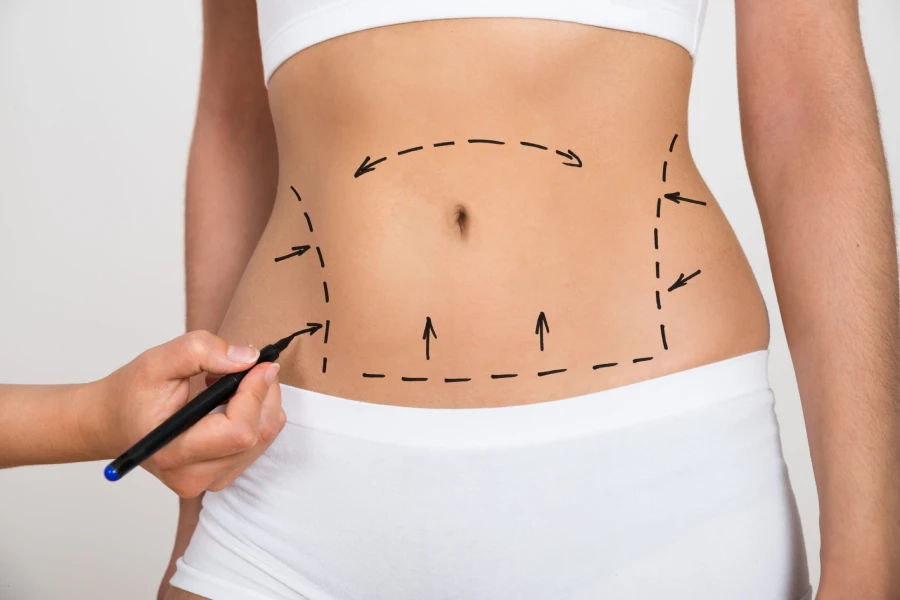Liposuction and Body Contouring
Regardless of gender, anyone can have stubborn fat in one or more areas of their body that resists diet and exercise at some point in their life. No matter how much you pay attention to your diet or exercise, you may not be able to get rid of the fat deposits in these areas.
In such cases, the most effective method you need is liposuction. With liposuction, you can get rid of stubborn, localized fat and achieve the body you’ve always dreamed of and the confidence you deserve.
What is Liposuction?
Liposuction is often referred to as Lipo or Liposculpture. No matter what it’s called, liposuction is one of the most popular body contouring procedures performed in our country and is typically done under general anesthesia.
Liposuction can be performed as a standalone procedure or combined with procedures like a tummy tuck, breast reduction, or mommy makeover.
It’s just as important to understand what liposuction is not as it is to understand what it is. Liposuction is not a weight-loss surgery. It is not a solution for obesity and cannot address issues such as stretch marks, loose skin, dimples, or cellulite. If you’re considering this procedure, you should be at a stable, healthy weight.
Benefits of Liposuction
Liposuction can be a life-changing experience, offering a range of benefits, including:
- A balanced, attractive figure
- A younger and more toned body shape
- Better fit in swimsuits and other clothing
- Increased confidence
In addition to the body contouring benefits of liposuction, like many people who undergo the procedure, you may find that you are inspired to maintain an active and healthy lifestyle to preserve your results. These lifestyle changes can offer significant long-term benefits and help you stay in shape for years to come.
Common Areas for Liposuction Treatment
Liposuction is a highly versatile procedure that can effectively treat any area with subcutaneous fat. The most common areas for liposuction include:
- Abdomen
- Love handles
- Hips
- Buttocks
- Chest
- Back
- Arms
- Thighs
- Inner knees
- Chin
Liposuction is a popular treatment for both women and men. In addition to refining masculine contours, many men choose liposuction to treat gynecomastia, a condition where men suffer from excessive breast tissue.
Who is a Candidate for Liposuction?
Like other plastic surgery procedures, candidates for liposuction must be at least 18 years old and have realistic expectations about what the procedure can achieve. Typically, good candidates for liposuction:
- Are in good general health
- Are at a healthy, stable weight
- Are non-smokers or willing to quit two weeks before the procedure
- Have realistic expectations for their results
It’s best to think of liposuction as a way to add the finishing touches to your exercise and diet efforts. Lipo is not a substitute for a healthy lifestyle. If you are significantly overweight, you may need to postpone treatment until you reach a healthy weight.
Liposuction Recovery Process
It’s important to understand that every patient is unique and may recover a little differently. Some patients choose to take three to five days off from work to recover, while others may be able to return to work within 24 hours, depending on the type of procedure performed and the physical demands of their job. Rest as much as possible and avoid strenuous activities during your recovery.
After the surgery, dressings will be applied, and you will be fitted with a compression garment that will need to be worn for about four weeks. The treated area may feel numb or uncomfortable for the first few days after surgery. You may also experience some swelling or bruising, which is completely normal and will subside over time.
You may see some results immediately after the procedure, but the final result of liposuction typically becomes fully apparent a few months after the surgery.
Will Liposuction Leave Scars?
During the liposuction procedure, small incisions of a few millimeters are made. These incisions are carefully closed with sutures, tissue glue, or tape. Over time, these incisions will fade to the point where they are barely visible.

